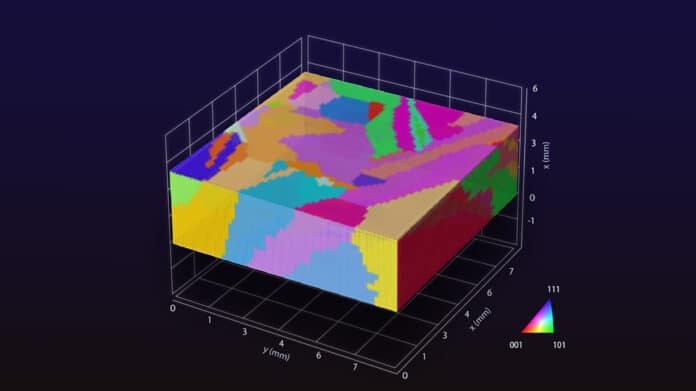Most modern devices, from smartphones to cars, contain polycrystalline components. Despite their widespread use, these materials pose challenges due to their intricate structures. The performance of polycrystalline materials is influenced by factors such as complex microstructures, dislocations, and impurities.
A significant issue in industrial applications is the formation of tiny crystal defects, known as dislocations, caused by stress and temperature changes. These dislocations can disrupt the regular arrangement of atoms in the lattice, impacting electrical conduction and overall performance. Understanding the formation of these dislocations is crucial to minimizing the risk of failure in devices utilizing polycrystalline materials.
Scientists at Nagoya University in Japan have used AI to discover a new method for understanding small defects called dislocations in polycrystalline materials. Using AI, they analyzed image data of a material widely used in solar panels called polycrystalline silicon.
The AI generated a 3D model in virtual space, assisting the team in pinpointing areas where dislocation clusters impacted the material’s performance.
Once dislocation cluster areas were identified, scientists employed electron microscopy and theoretical calculations to comprehend their formation. Stress distribution in the crystal lattice was revealed, and staircase-like structures at the boundaries between crystal grains were discovered. These structures contributed to dislocations during the crystal growth process.
Professor Noritaka Usami said, “We found a special nanostructure in the crystals associated with dislocations in polycrystalline structures.”
Beyond its practical applications, this study holds significance for the science of crystal growth and deformation. The Haasen-Alexander-Sumino (HAS) model, a key theoretical framework for comprehending dislocation behavior, may have missed certain dislocations.
The team’s calculations of the atomic arrangement in these structures revealed unexpectedly large tensile bond strains along the edges of the staircase-like structures, which were found to trigger dislocation generation—a surprising revelation.
Usami explained, “As experts who have been studying this for years, we were amazed and excited to finally see proof of the presence of dislocations in these structures. It suggests that we can control the formation of dislocation clusters by controlling the direction in which the boundary spreads.”
“By extracting and analyzing the nanoscale regions through polycrystalline materials informatics, which combines experiment, theory, and AI, we made this clarification of phenomena in complex polycrystalline materials possible for the first time.”
“This research illuminates the path towards establishing universal guidelines for high-performance materials and is expected to contribute to the creation of innovative polycrystalline materials. The potential impact of this research extends beyond solar cells to everything from ceramics to semiconductors. Polycrystalline materials are widely used in society, and the improved performance of these materials has the potential to revolutionize society.”
Journal Reference:
- Kenta Yamakoshi, Yutaka Ohno, Kentaro Kutsukake, Takuto Kojima et al. Multicrystalline Informatics Applied to Multicrystalline Silicon for Unraveling the Microscopic Root Cause of Dislocation Generation. Advanced Materials. DOI: 10.1002/adma.202308599
